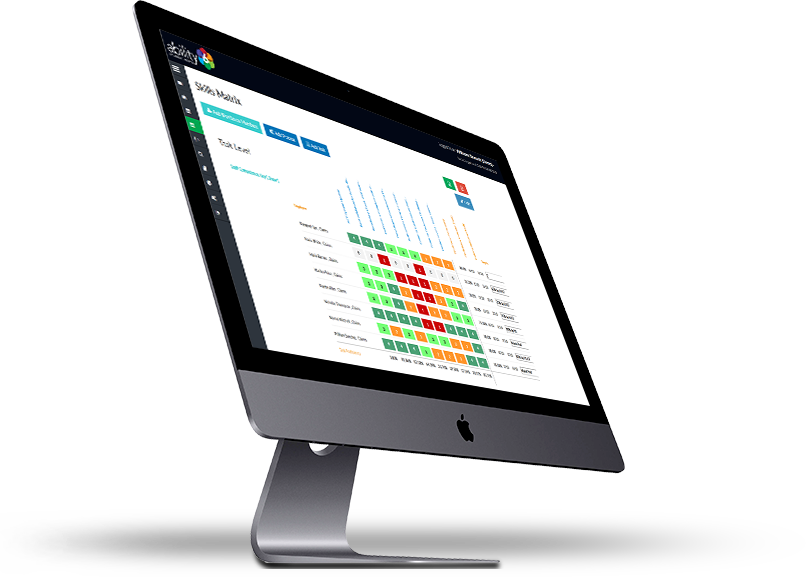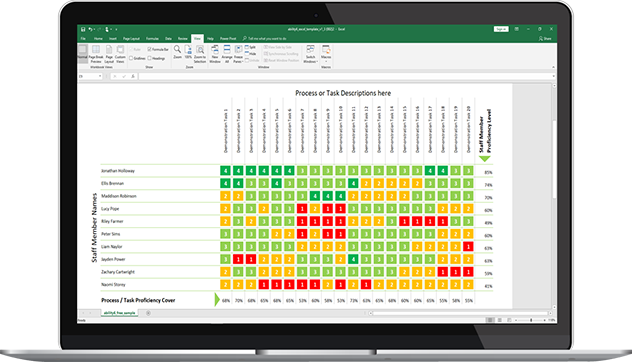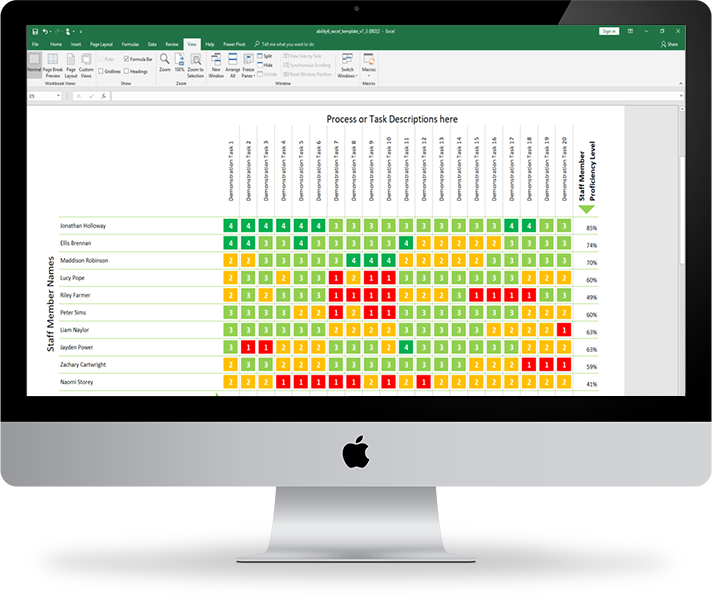A skills matrix is the most effective way to identify skills gaps!
Simply add your team’s employees and tasks, then using an industry recognised, built-in grading system rate each employee against each task instantly generating a one-page visual heat map of collective skills strengths and gaps. Full Instructions are contained within the Excel template. Increase the efficiency of your team today and save your organisation £1000s in underutilised resource!

What is a Skills Matrix?
A ‘skills matrix’ falls within the ‘skills management’ process. A skills matrix is a grid or table that clearly and visibly illustrates the skills and competence held by individuals within a team. Its primary aim is to help in the understanding, development, deployment and tracking of people and their skills. Well-implemented skills matrices should identify the skills that a job role requires, the skills of all individual employees, and any gap between the two.
Learn MoreThe benefits are widespread and can easily be categorised into three core areas, namely;

1.Individual / Employee
- Increased competencies – a feeling of investment into their role and their development
- Decreased stress levels – work competencies increase thus removing uncertainty
- Full awareness of what their ‘role’ entails including the relevant skills competencies required
- Full awareness of the desired areas of growth and where they need to focus their training efforts
- Can; within some organisations be used within employees Personal Development Plans (PDP)
- Employees gain from improved identification and understanding of their own strengths and weaknesses
- Aid in understanding the value they bring to the organisation (which in turn can boost morale)

2.Organisation / company
- Enables managers, function or business owners to understand the skill strengths and weaknesses of employees reporting to them.
- Increased capacity – by addressing skills shortages and increasing employee competencies companies can release real capacity into their businesses without incurring the heavy costs of recruitment
- Creates the ability to search for desired skills and talents across the organisation (e.g. to help fill a role or to assist with either short or long term increased requirements of a task from an end-client)
- A rolled-up view of skills and skills gaps across an organization can enable its executives to see areas of skill strength and weakness.
- Enables proficient future planning against projected availability of staff. When used company-wide creates management consistency to drive an organisation forward
- Customers experience a quality of product/service increasing the likelihood of them returning and advertising your products/services.
- Customers experience a quality of product/service increasing their loyalty levels

3.Customer / end-client
The customer should largely be unaware of the existence of a skills matrix. The customer will however, benefit from the increased levels of competency of your staff, their ability to resolve queries in a timely manner and on first touch (i.e. avoiding the ‘I’ll call you back’ scenario). Simply put the benefits are endless.
- Faster response rates (decreased lead times)
- Increased rate of quality in service or products (reduced defect and return rates)
- Increased employee competencies leads to speed which can result in ‘faster to market’ products and services
- Customers feels valued
- Customers experience a very easy and smooth transaction with company



